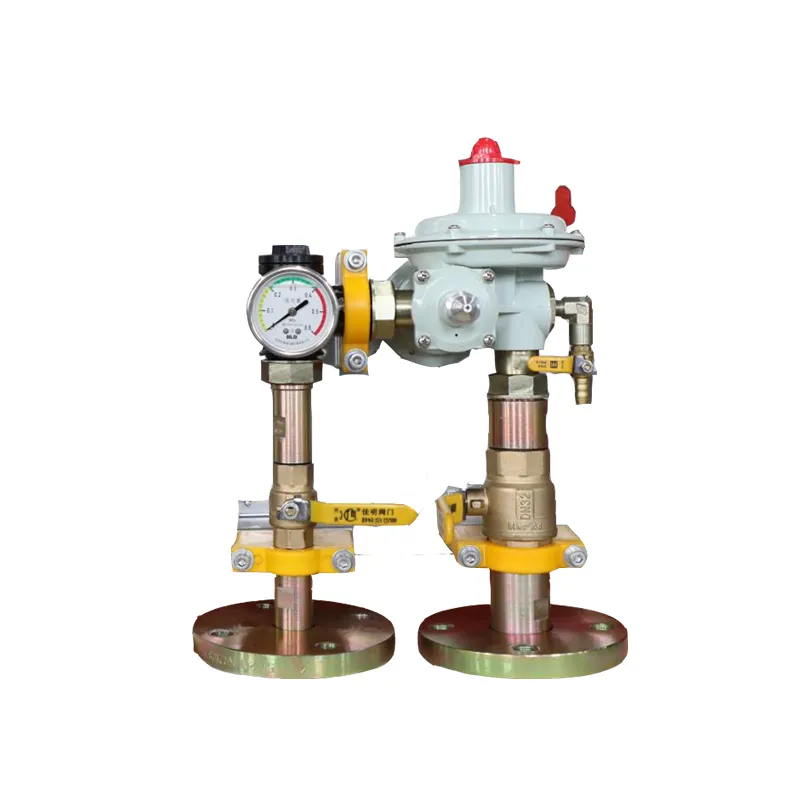
Nov . 30, 2024 07:01
Back to list
electric regulating valve
Understanding Electric Regulating Valves An Essential Component for Precision Control
Electric regulating valves are crucial devices used in various industrial applications to manage the flow of fluids or gases in a controlled manner. By adjusting the opening of the valve in response to electrical signals, these devices provide precise control over the flow rate, pressure, and temperature within systems. This article explores the function, types, advantages, and applications of electric regulating valves.
Functionality of Electric Regulating Valves
Electric regulating valves operate using a combination of mechanical and electrical components. At their core, these valves consist of a valve body, an actuator, and a control system. The actuator, which is typically electric, receives signals from a control system or controller that dictates the desired position of the valve. Depending on the input signal, the actuator adjusts the position of the valve, thus controlling the flow rate of the fluid or gas passing through.
One of the primary functions of these valves is to maintain a constant flow or pressure, even in fluctuating operating conditions. This is especially important in processes where precise control is necessary for safety, efficiency, or product quality. For instance, in a chemical processing plant, maintaining the correct flow rates can be vital for preventing chemical reactions from becoming uncontrolled.
Types of Electric Regulating Valves
Electric regulating valves come in various types, each suited for specific applications. The most common types include
1. Globe Valves These valves have a spherical body design that allows for smooth control of flow. They are often used in applications requiring fine control.
2. Ball Valves Recognized for their durability and efficiency, ball valves provide quick on/off control and are suitable for applications where a full flow or no flow is optimal.
3. Butterfly Valves These valves have a disk that rotates to control flow. They are typically used for large volumes and are favored for their lightweight and compact design.
4. Gate Valves While primarily intended for on/off control, when combined with electric actuators, they can be configured to regulate flow effectively in certain scenarios.
Each type of valve has its own set of advantages and is chosen based on specific application requirements, such as fluid type, flow rates, and operating conditions.
Advantages of Electric Regulating Valves
Electric regulating valves offer numerous advantages over their manual or pneumatic counterparts. Some of the key benefits include
electric regulating valve

- Precision Control Electric valves provide high accuracy in flow regulation, ensuring that desired parameters are maintained consistently
.- Remote Operation With electric actuators, these valves can be operated remotely, reducing the need for manual intervention and minimizing the risk of errors.
- Integration with Control Systems Electric valves can easily integrate with automated control systems, allowing for advanced monitoring and control through sensors and feedback loops.
- Reduced Maintenance Electric regulating valves typically require less maintenance compared to pneumatic valves, as they have fewer moving parts that are susceptible to wear.
- Energy Efficiency They can operate at lower energy levels, decreasing overall energy consumption compared to traditional methods.
Applications of Electric Regulating Valves
Electric regulating valves find applications across various industries. Some significant areas include
- Chemical Processing Maintaining consistent temperatures and pressures is critical to chemical reactions, making these valves essential for safety and efficiency.
- Water Treatment Used to regulate the flow of water and chemicals in treatment processes, ensuring the purity and quality of water.
- HVAC Systems In heating and cooling systems, they control the flow of air or water, contributing to energy savings and comfort in buildings.
- Oil and Gas Essential for pressure control and flow regulation in exploration and production operations, where safety and precision are paramount.
Conclusion
Electric regulating valves play a pivotal role in modern industrial processes, providing precise control and improving system efficiency. Their ability to integrate into automated control systems, coupled with their reliability and low maintenance requirements, make them indispensable in a wide range of applications. As industries continue to innovate and evolve, the relevance of electric regulating valves is set to grow, ensuring safer and more efficient operations in the future.
Latest news
-
Safety Valve Spring-Loaded Design Overpressure ProtectionNewsJul.25,2025
-
Precision Voltage Regulator AC5 Accuracy Grade PerformanceNewsJul.25,2025
-
Natural Gas Pressure Regulating Skid Industrial Pipeline ApplicationsNewsJul.25,2025
-
Natural Gas Filter Stainless Steel Mesh Element DesignNewsJul.25,2025
-
Gas Pressure Regulator Valve Direct-Acting Spring-Loaded DesignNewsJul.25,2025
-
Decompression Equipment Multi-Stage Heat Exchange System DesignNewsJul.25,2025

